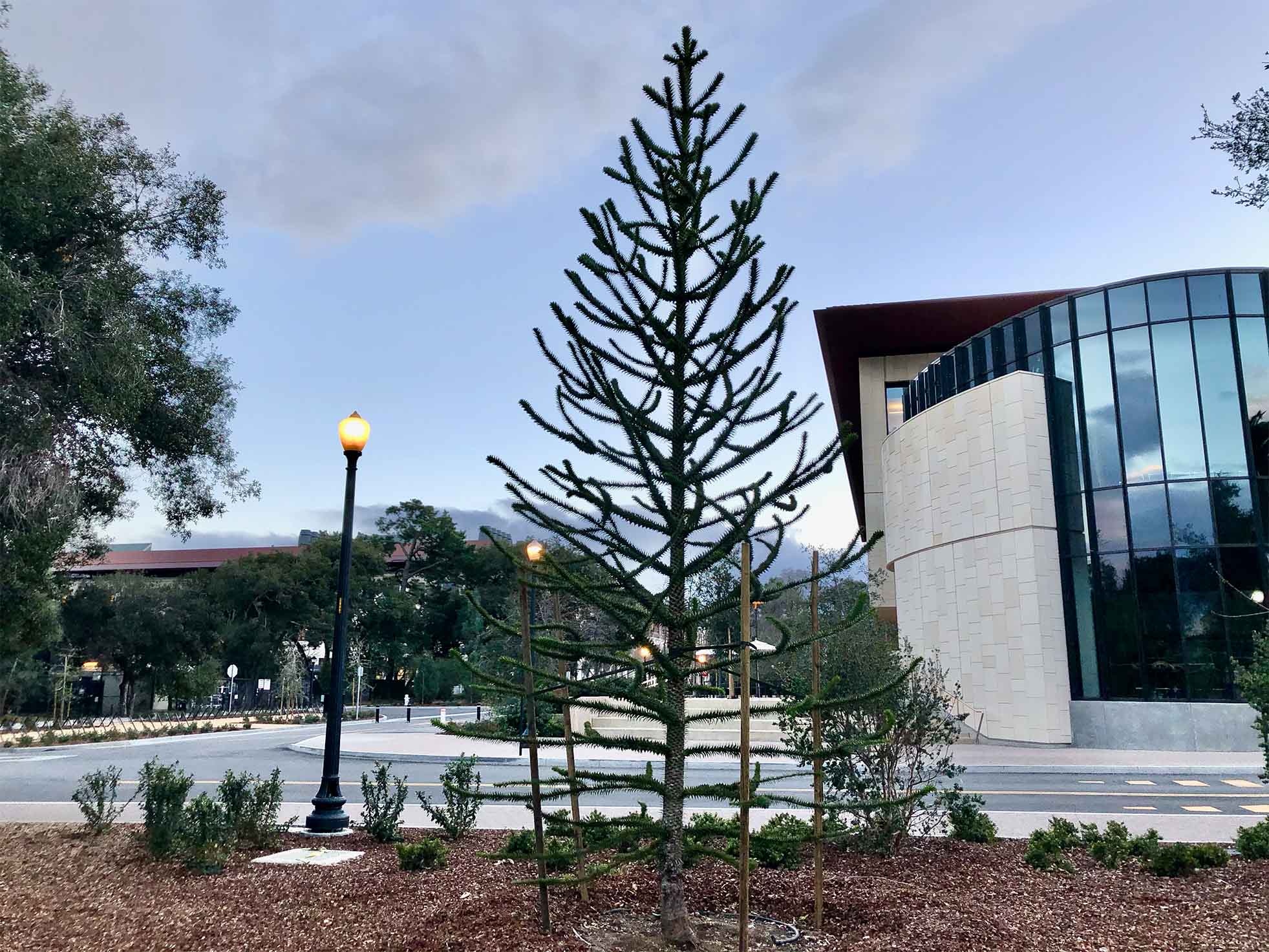Araucaria araucana
 monkey puzzle
monkey puzzle

This odd tree, known in French as désespoir des singes, is worth taking children to see. Monkey puzzle became very popular in English gardens after being introduced in 1795. The 1- to 2-inch long, sharply pointed leaves are similar to those on the bunya bunya, but are more densely arranged, overlapping to completely obscure the trunk and branches.
Two specimens planted in front of the Mausoleum, 6 feet tall in 2003, were successors to trees documented there in 1913 and in the 1970s. They died in 2005 and were replaced. In 2020–2021 they declined as well; one was replaced with a Guadalupe palm at the same time the landscaping in front of the Mausoleum was redone. Fortunately, at the same time a larger specimen was planted in the new Chile-themed garden on Campus Drive in front of the new ChEM-H and Neurosciences complex. Mature specimens are hard to find in the vicinty of campus, but some are listed in The Trees of Golden Gate Park and San Francisco (E. McClintock, 2001).
Monkey puzzle tree, whose nuts are eaten in Chile, and a Brazilian tree whose seeds are planted by tapirs, are South American species of Araucaria. The others are from Australia, Norfolk Island, Vanuatu, and the New Caledonia region, a curious dichotomy no doubt related to continental drift. A petrified forest in Arizona testifies to the great age of the genus. A new member of the family, Wollemi pine, has been discovered in the bush less than 50 miles from Sydney. Visitors are blindfolded before going to the secret location by helicopter. The few dozen trees appear to have identical DNA, which raises fears for their resistance to disease. The genus is named for the Araucanian natives of Chile.
Name derivation: Araucaria – Araucani Indians of central Chile; araucana – from the Araucan homeland.
About this Entry: The main text of this entry is from the book Trees of Stanford and Environs, by Ronald Bracewell, published 2005. John Rawlings noted the 2005 replacements in 2005. 2020–2021 notes and Chile garden note added (Jun 2022, SP).




